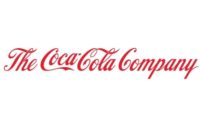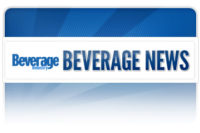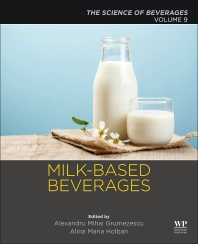The Coca-Cola Co. reports 1st-quarter 2013 results
Company plans expanded territories deal with bottlers

Atlanta-based The Coca-Cola Co. reported its results for the first quarter of 2013. Overall, first-quarter reported net revenues declined 1 percent, with comparable net revenues also down 1 percent. This reflects a 2 percent increase in concentrate sales, offset by a 1 percent impact from structural changes and a 2 percent currency impact. Excluding the impact of currency and structural changes, net revenues grew 2 percent despite two fewer selling days in the quarter.
Worldwide, the company’s volume grew 4 percent, with 3 percent growth in Coca-Cola Americas and 5 percent growth in Coca-Cola International. The company also reported solid volume growth in key developed markets, including Germany, which was up 3 percent, as well as North America and Japan, which were both up 1 percent for the quarter. It also delivered strong volume growth during the quarter in key emerging markets, including Thailand, India, Russia, Mexico and Brazil. In addition, the company’s China business delivered 1 percent volume growth in the quarter as well as strong volume growth in countries with per capita consumption of company brands less than 150 8-ounce servings a year, with volume up 7 percent in the quarter overall.
The North America Group's volume grew 1 percent in the quarter, cycling 2 percent growth in the prior-year quarter. Reported and comparable currency neutral net revenues for the quarter declined 1 percent, reflecting positive price/mix of 2 percent offset by the “as reported” volume decline of 2 percent, which includes the impact of two fewer selling days in the quarter as well as a 1 percent unfavorable impact from structural changes, it stated. After adjusting for the effect of two fewer selling days in the quarter, unit case volume is broadly in line with “as reported” volume, and the company expects these sales to be in line for the full year as well, it says. First-quarter reported operating income declined 24 percent, which includes the effect of items impacting comparability, principally costs related to the company’s previously announced productivity and reinvestment program, it adds.
Value share for non-alcohol ready-to-drink (NARTD) beverages grew for the 23rd consecutive quarter as the company maintained global volume share in the quarter. Furthermore, the company’s immediate consumption (IC) volume grew 3 percent globally in the first quarter, with sparkling IC volume up 2 percent and still IC volume up 3 percent, driven by focused in-store activation efforts and continued cold-drink equipment expansion that built on the 1.3 million units placed in 2012, it says.
Worldwide sparkling beverage volume grew 3 percent for the quarter, led once again by brand Coca-Cola, as the company activated its “Crazy for Good” marketing campaign around the world and continued to offer consumers relevant price and package size choices as well as promotions centered around the notion of “Coke with Meals.” Worldwide brand Coca-Cola volume grew 3 percent for the quarter, with growth across diverse markets, including Thailand, India, Russia, China, Germany, Japan and Brazil. In addition, Fanta volume grew 6 percent, and Sprite volume grew 5 percent for the quarter. Growth was primarily driven by innovation in sweeteners and packaging as well as activation of global marketing campaigns in locally relevant ways, such as the Fanta "Play" campaign and the Sprite "Uncontainable Game" NBA partnership, the company notes.
Worldwide still beverage volume grew 6 percent in the quarter, with volume growth across most beverage categories, including RTD tea, juices and juice drinks, packaged water, energy drinks and sports drinks. In particular, RTD tea volume grew double digits in the quarter, with continued strong performance from key brands such as Gold Peak and Honest Tea in North America as well as Fuze Tea, which was expanded across multiple markets worldwide during the quarter. Juice and juice drink volume grew 9 percent in the quarter, with growth across all geographic operating groups. Energy drinks volume also grew 9 percent in the quarter, and packaged water volume grew 1 percent in the quarter, as the company strengthened its focus on innovative and sustainable IC packaging, it says.
During the quarter, North America gained volume and value share in NARTD, sparkling and still beverages. Sparkling beverage volume declined 1 percent in the quarter with solid sparkling beverage price/mix growth of 3 percent. Brand Coca-Cola grew slightly in the quarter with double-digit volume growth in package options such as the 7.5-ounce mini-can and the 1.25-liter polyethylene terephthalate (PET) bottle. Coca-Cola Zero volume grew 3 percent in the quarter with strong activation around National Collegiate Athletic Association (NCAA) March Madness. Still beverage volume grew 6 percent in the quarter, led by continued strong growth in the RTD tea portfolio. Juice and juice drink brands grew volume 3 percent in the quarter, with the Simply trademark up 9 percent, driven by the launch of Simply Orange with Banana, Simply Orange with Tangerine and Simply Lemonade with Blueberry as well as growth in single-serve packaging. In packaged water, share declined slightly as Dasani maintained a price premium over other major competitors, supported by the brand’s PlantBottle PET packaging. In sports drinks, Powerade maintained value share with a decline in volume share in the face of aggressive competitive pricing in the category, according to the company.
Muhtar Kent, the company’s chairman and chief executive officer, said in a statement: “I am pleased with our first-quarter performance results, having once again delivered solid growth against the backdrop of a still uncertain global economy. Guided by our 2020 Vision, our roadmap for winning together with our global system bottling partners, we enter 2013 and the fourth year of our journey to 2020 focused and on track to reach our goals.
“Together, we are working to unlock value, to execute with excellence and to keep winning volume and value share,” he continued. “We proudly serve more than 500 brands through 23 million retail customer outlets each week, providing consumers a wide array of choices in package sizes, sweeteners and beverages — including more than 800 low- and no-calorie options. Our focus each and every day is to refresh the world, inspire moments of optimism and happiness, create value, and make a meaningful difference. I am proud of all we are achieving alongside our customers, bottlers and other partners. Even so, we remain constructively discontent as we seek to make the most of the vast growth opportunities we continue to see around the world.”
The Coca-Cola Co. also announced that it has taken a significant step toward its 2020 Vision by commencing implementation of a 21st century beverage partnership model in the United States. Under the new model, The Coca-Cola Co. and five U.S. bottlers — namely Coca-Cola Bottling Co. Consolidated, Charlotte, N.C.; Coca-Cola Bottling Co. United Inc., Birmingham, Ala.; Swire Coca-Cola USA, Draper, Utah; Coca-Cola Bottling Co. High Country, Rapid City, S.D.; and Corinth Coca-Cola Bottling Works Inc., Corinth, Miss. — have agreed to take the next step in creating a stronger U.S. business model by being granted new, expanded territories. Depending on the situation, transactions might include an outright territory sale, a territory swap, or a sub-bottling arrangement under which the bottler would make ongoing payments in exchange for exclusive territory operating rights. These new territories will include some of the largest cities in the geographies that border these bottlers' existing territories, allowing each bottler to better service local customers and provide more efficient execution, the company says. The transactions are subject to the parties reaching definitive agreements by the end of 2013, with closings expected during 2014.
Looking for a reprint of this article?
From high-res PDFs to custom plaques, order your copy today!






